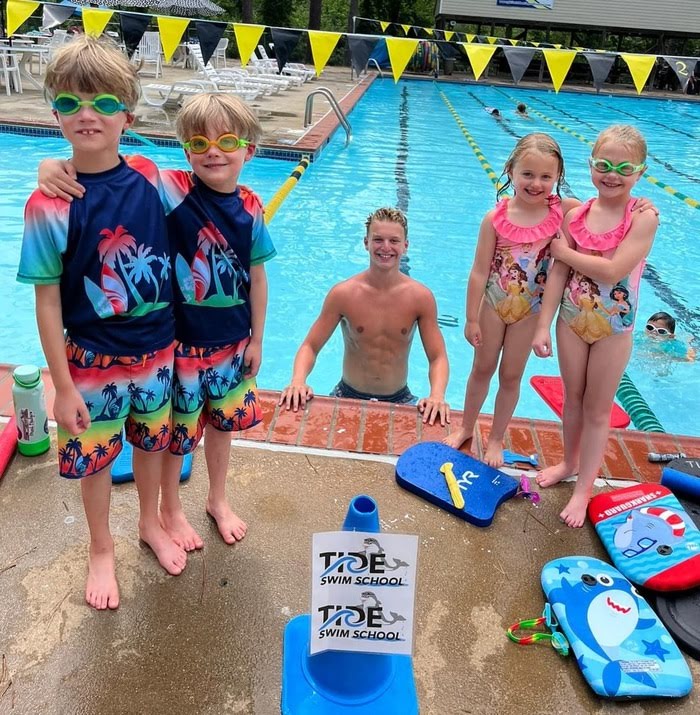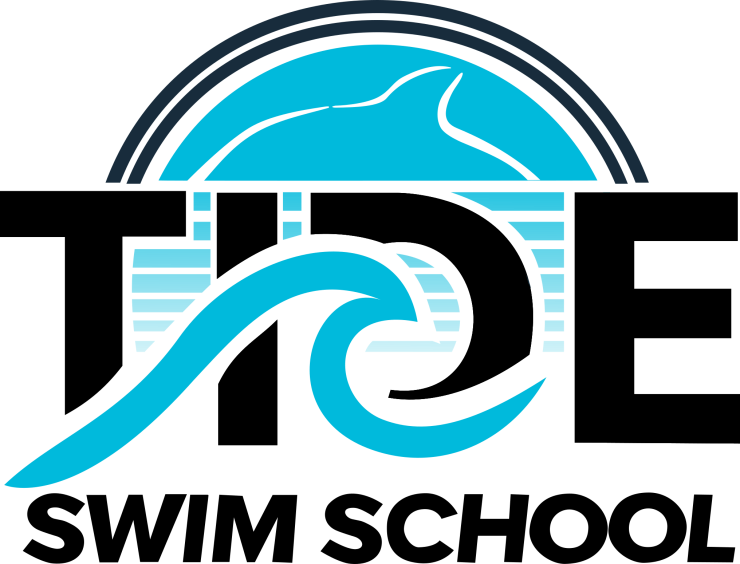We believe in small group lessons!
Small group swimming lessons offer several advantages over private lessons, including:
- More Affordable: Private lessons are typically more expensive than small-group lessons. This is because the instructor is only working with one student at a time.
- More Social: Small group lessons provide an opportunity for children to socialize with other children their age. This can help them build confidence and make friends.
- More Challenging: Small group lessons can be more challenging than private lessons because the instructor is able to provide more feedback and instruction to each student. This can help students learn more quickly and improve their swimming skills.
- More Fun: Small group lessons can be more fun than private lessons because children enjoy being around other children. This can help them stay motivated and engaged in the learning process.
Overall, small group swimming lessons offer a number of advantages over private lessons. If you are looking for an affordable, social, and challenging way for your child to learn to swim, small group lessons may be the best option.
We adjust our class size based on age:
- Ages 3 to 4: two swimmers per class (semi-private lesson)
- Ages 5 and older: three swimmers per class
- Private Lessons and Parent and Me Classes also available
- New for 2025! Adaptive Swim Lessons taught by Adaptive Swim Whisperers (instructors certified by Swim Angelfish)
Curriculum
Tide Swim School was founded by Tide Swimming, the area’s largest and highest-performing year-round swim program. Our curriculum was designed by professional swim coaches whose goal was to help students become confident swimmers. We also focus on stroke instruction that will prepare a swimmer to one day join a swim team. Our classes are smaller than other local swim schools and we offer private lessons upon request. Our students are matched by age and ability so they can learn and progress together in their swim lessons.
Parent and Me (ages 8 months to 3 years)
Experience your child's first time in a pool together! Parent and Me lessons are a child’s introduction to the water using water play, songs, and small movements to allow your baby or toddler to develop confidence in the water.
Parent and Me 1: Introduction to Water:
- splash water onto face
- jump to parent or instructor with assistance
- float on back with assistance
- getting in/out of the water assisted on steps
Parent and Me 2: Introduction to Swimming
- putting face in the water
- holding breath and releasing air
- Floating on back for 5 seconds
- Walk into and out of the pool unassisted
Track 1: Introduction to Water
New to swimming? This track allows a swimmer to become familiar with the water. From submersion, to blowing bubbles, to proper entry into the pool, this track is perfect for swimmers who have had no experience in the water or in swim lessons.
Skills include:
- submerge mouth, nose, and eyes for 5 seconds
- retrieve submerged objects
- introduction to flutter kick
- blowing bubbles for 3 seconds
- open eyes underwater
Track 2: Introduction to Swimming
Designed for those who are ready to start moving in the water, this track will work on the beginning techniques of swimming. This track is appropriate for those swimmers who are new to the sport of swimming but are comfortable with submersion, breathing, and beginning to swim without assistance.
Skills include:
- jump into water and level off on front
- back float
- introduce streamline off of wall
- roll front to back and back to front
Track 3: Forward Progression
Swimmers will work on the beginning phases of freestyle and backstroke with the goal of forward progression in each stroke.
Skills include:
- flutter kick on front to flags
- flutter kick on back to flags
- introduce position 11
- introduction to freestyle arms
- seated dive
Track 4: Let’s Swim!
Swimmers will have the opportunity to progress their freestyle and backstroke with the introduction of proper starts, streamlines, and an introduction to diving.
Skills include:
- in-line kicking and roll to breathe
- freestyle to flags
- drop-in and streamline off of wall
- kneeling dive
Track 5: Stroke Development
Freestyle and backstroke will be developed through breathing techniques, drills, and introduction to swimming the full length of the pool. This track introduces the swimmer to butterfly and breaststroke.
Skills include:
- freestyle with in-line breath 12.5 yards
- backstroke 12.5 yards
- introduction to breaststroke kick
- standing dive
Track 6: Stroke Technique
Using the full length of the pool, swimmers will learn a variety of drills and techniques used to improve their form and speed.
Skills include:
- freestyle with in-line breath for 25 yards
- backstroke for 25 yards
- introduction to breaststroke
- introduction to butterfly stroke
Track 7: Putting It All Together
Starts, diving, introduction to racing - we cover it all in this track!
Skills include:
- butterfly for 12.5 yards
- Breaststroke for 12.5 yards
- standing dive with streamline, all strokes
- introduction to flip turns
Track 8: Stroke Detail and Conditioning
We put the finishing touches on each of the four strokes and also introduce the swimmer to swimming 50 yards of all 4 strokes, 200 yards of freestyle, and a 200yd IM.
Skills include:
- completion of all four strokes for the full-length of the pool
- proper turns for each stroke
- introduction to the individual medley
GIVE YOUR CHILDREN A HEAD START IN LIFE
Teach them to swim!
"Lead researcher Professor Robyn Jorgensen says the study shows young children who participate in early-years swimming achieve a wide range of skills earlier than the normal population."

